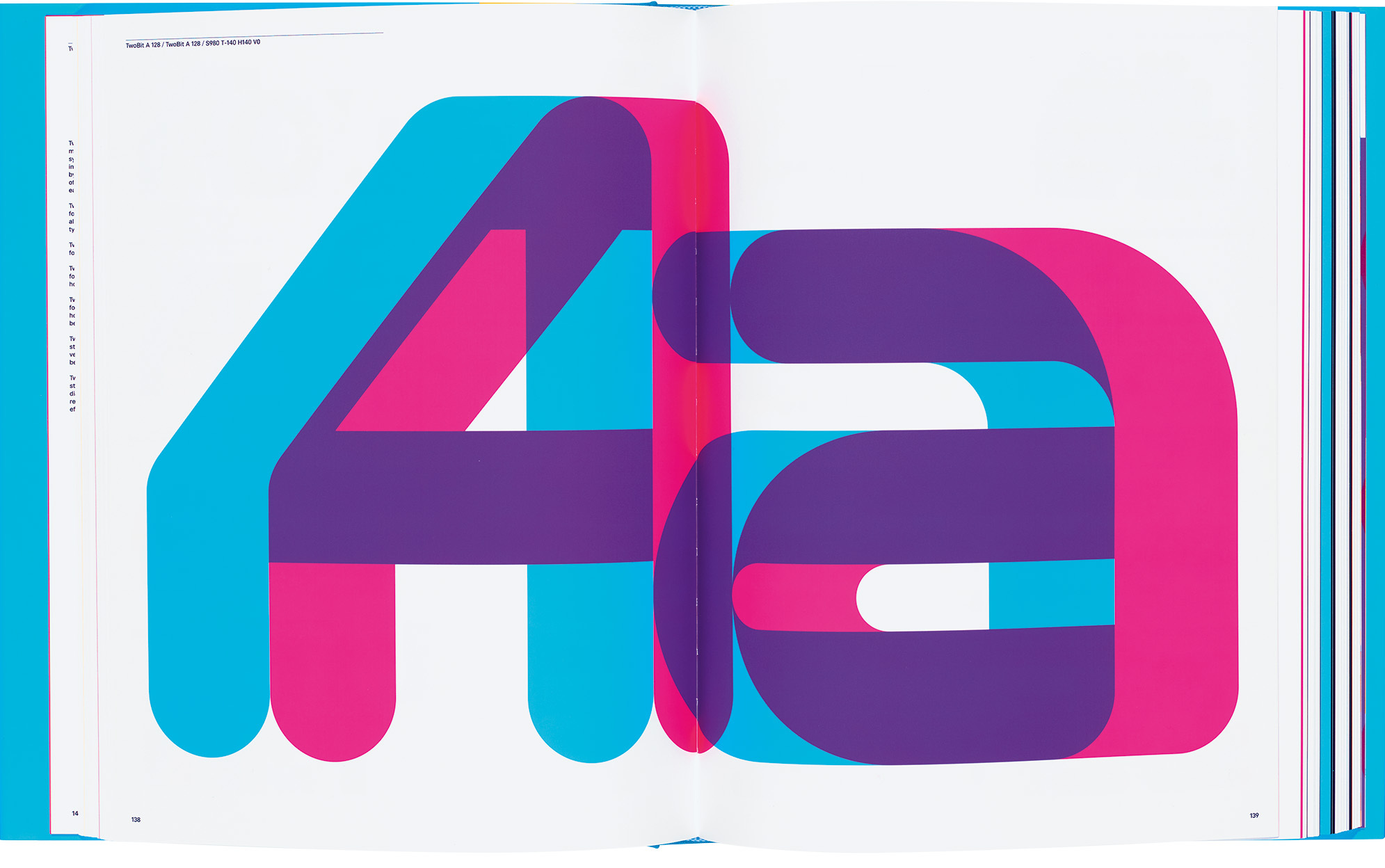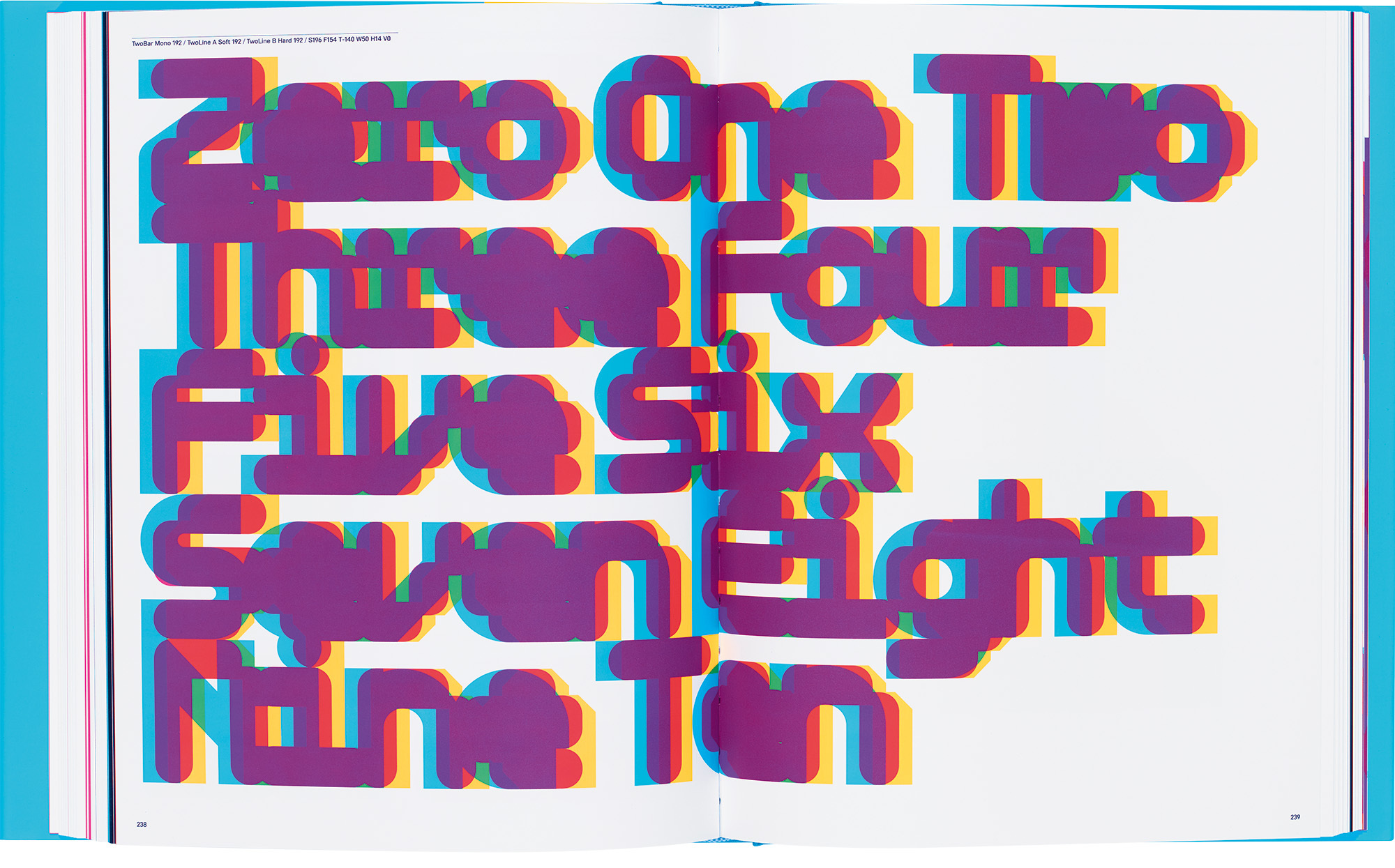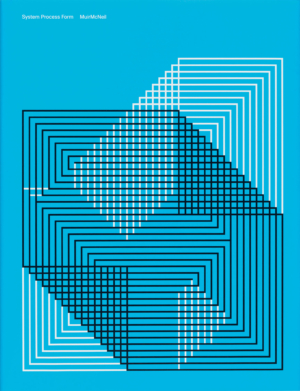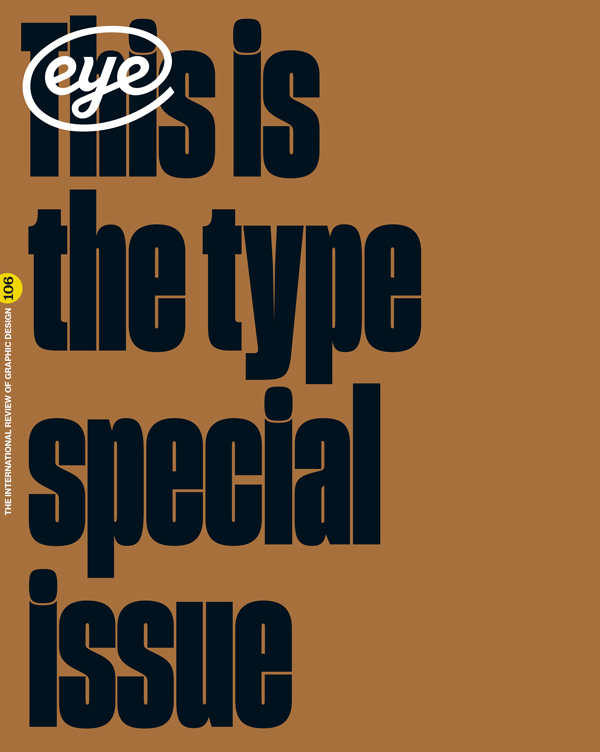Summer 2024
Chance can be a fine thing
System Process Form
Designed and written by Paul McNeil and Hamish Muir. Typefaces: MMcN Two Type System, MMcN Sans Sans. Unit Editions, £75, $95
‘An exploration of 7,762,392 typefaces’, an additional subtitle for this tome, sets the scene for what is to come. System Process Form continues with a quote from Anni Albers in 1958: ‘The conscientious designer does not himself design at all but rather gives the object-to-be a chance to design itself.’ MuirMcNeil’s book sets out to explore variations on their Two Type System, a seemingly infinite collection of modular, geometric typography. As their website states, their activities are focused, ‘on exploring systematic and algorithmic methods in type design, graphic design and moving image’. This book seems to be a perfect illustration of their practice.

It starts off by simply showing the variations of the modular type – each adjusted weight shows the progression from light to black weights. Relatively basic monospaced fonts are deconstructed then reconstructed. The work gradually builds over three distinct sections with more and more overlapping and multiplied colour and shape. As you turn the pages you are taken on a journey from readable letters to typographic and graphic joy. The letterforms build up to and over the edge of legibility into pure abstraction.
The central premise of setting up typographic systems that design themselves belies the thought and focus of the creation of the system itself. This is not an arbitrary collection of data points, even if the end results are unexpected and seemingly random. But this mathematical approach does not just satisfy the logical brain. It creates an explosion of colour and form.
There is an element of the idea that reflects the Modernist maxim of ‘form follows function’, coined by American architect Louis Sullivan: ‘It is the pervading law of all things organic and inorganic, of all things physical and metaphysical, of all things human and all things superhuman, of all true manifestations of the head, of the heart, of the soul, that the life is recognisable in its expression, that form ever follows function. This is the law.’
The book’s introductory essay is illuminating, and adds depth to work that could be seen (mistakenly) as simply beautiful. The powerful design of the book uses a fluorescent alternative to CMYK, ‘printed in neon yellow, pink and blue inks plus metallic black throughout.’ Overprinting and multiplication create wonderful glyphs and shapes.

The book reminded me of two other contemporary designers. Firstly, Martin Lorenz of TwoPoints.Net, whose book Flexible Visual Systems, which I reviewed in Eye 104, brilliantly demonstrates his methods of setting up and trusting a process for identity projects. Secondly, DIA founder (and musician) Mitch Paone (see ‘Jump cuts’ in Eye 104), who I saw speak in London recently. Paone spoke eloquently about his creative process and using improvisation around a graphic theme, again trusting a process to deliver new and unexpected results.
MuirMcNeil’s work feels almost musical. For me, it echoes the thinking behind many different sonic variations upon themes, from Steve Reich (Different Trains) and Philip Glass (Music in Twelve Parts) right back to J. S. Bach (Goldberg Variations). As Bach himself explained it: ‘There is nothing remarkable about it. All one has to do is hit the right keys at the right time and the instrument plays itself.’
Muir and McNeil have set up scientific and creative parameters and let the graphic solutions flow. They allow themselves to believe in the process, something perhaps all designers could learn from in our practices.
Jim Sutherland, designer, London
First published in Eye no. 106 vol. 27, 2024
Eye is the world’s most beautiful and collectable graphic design journal, published for professional designers, students and anyone interested in critical, informed writing about graphic design and visual culture. It is available from all good design bookshops and online at the Eye shop, where you can buy subscriptions and single issues.

